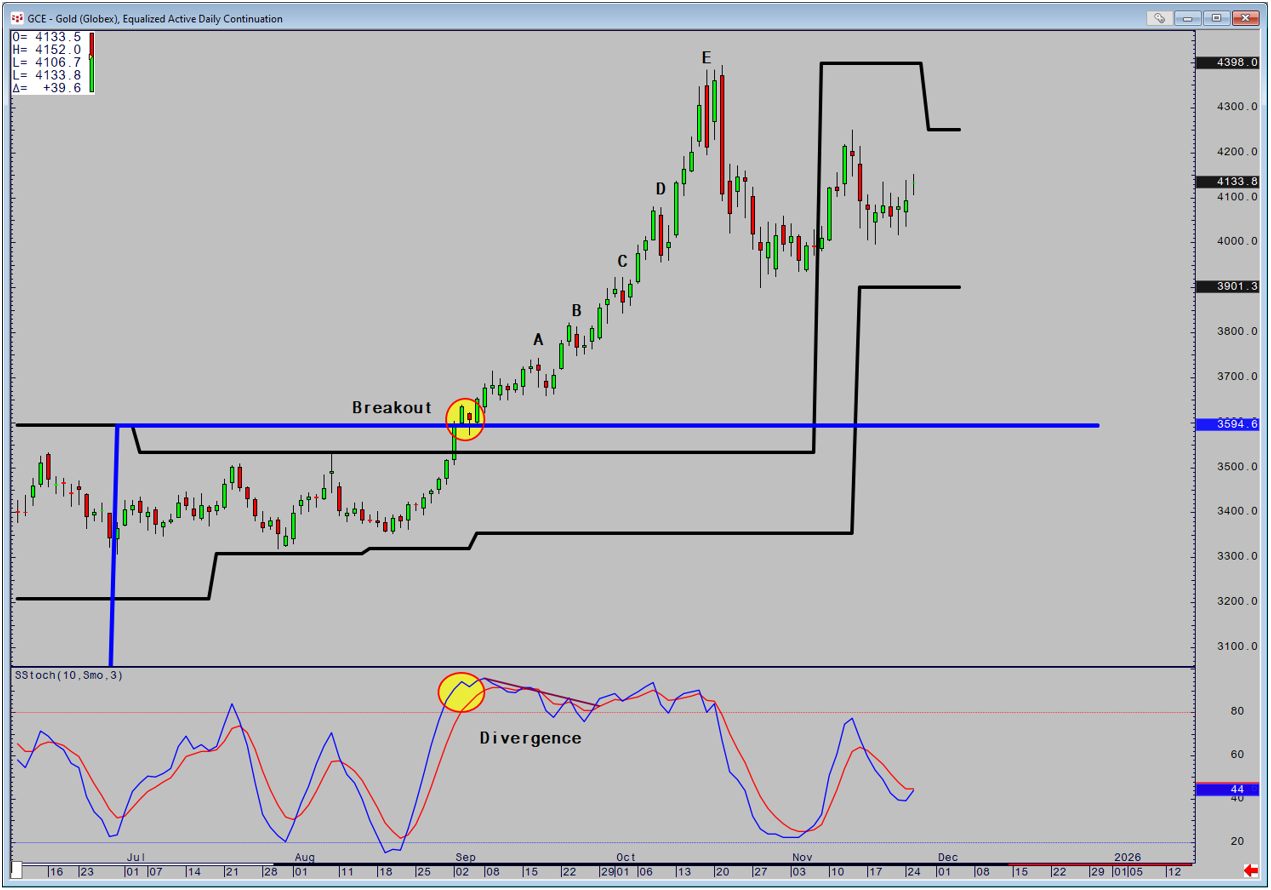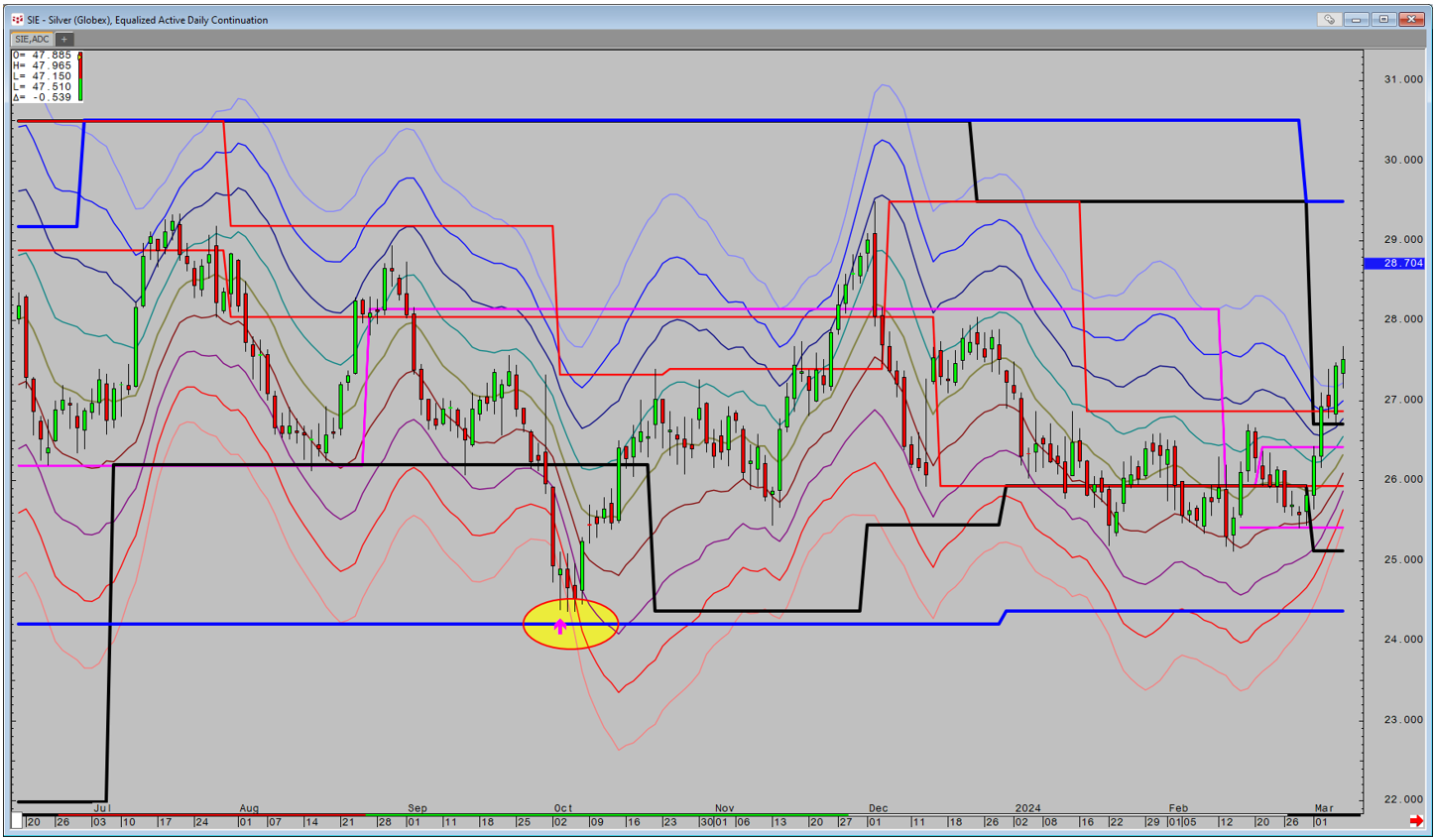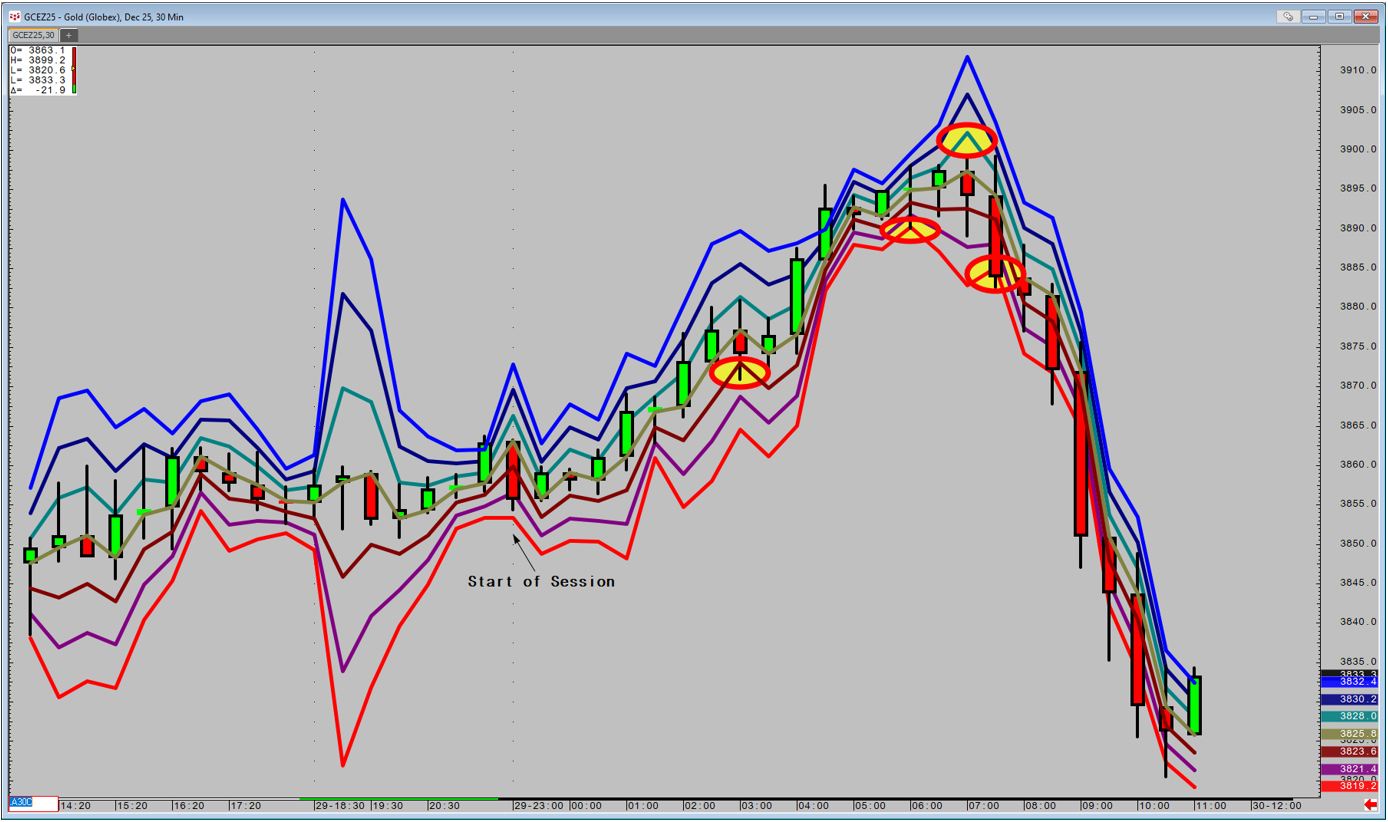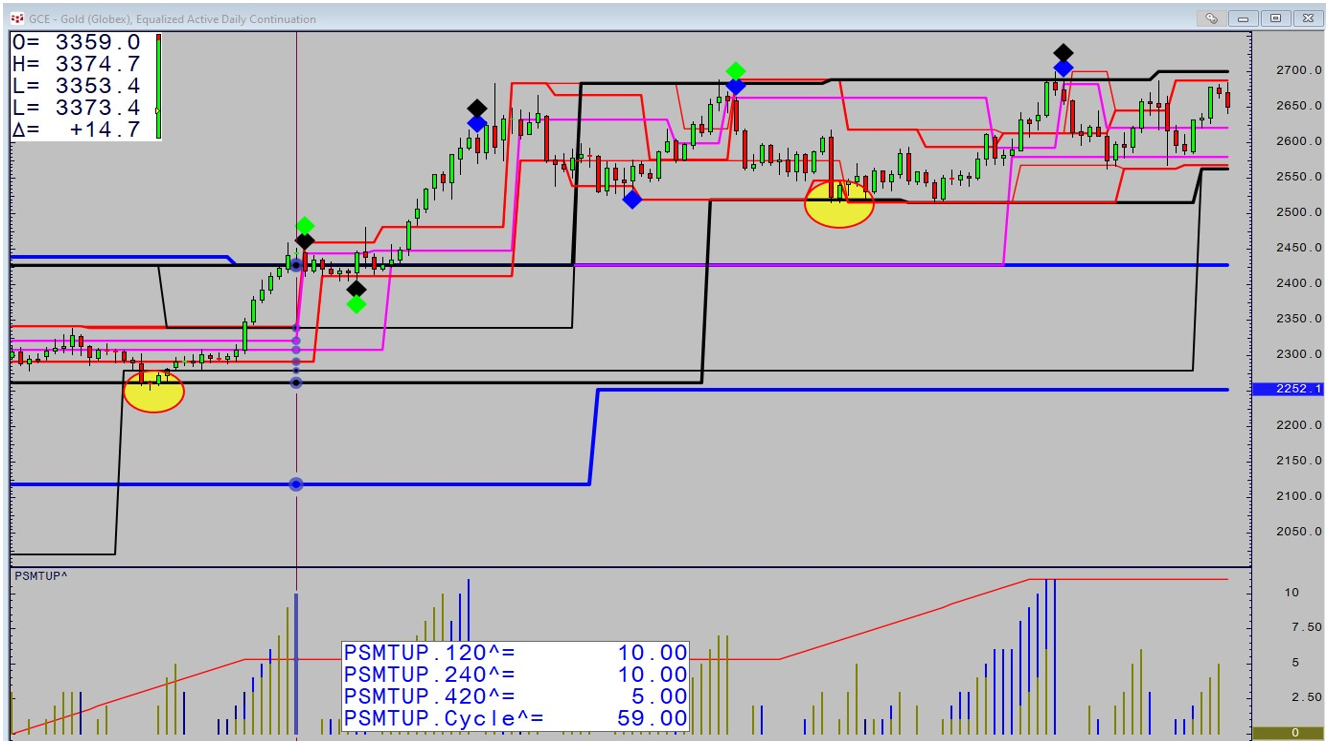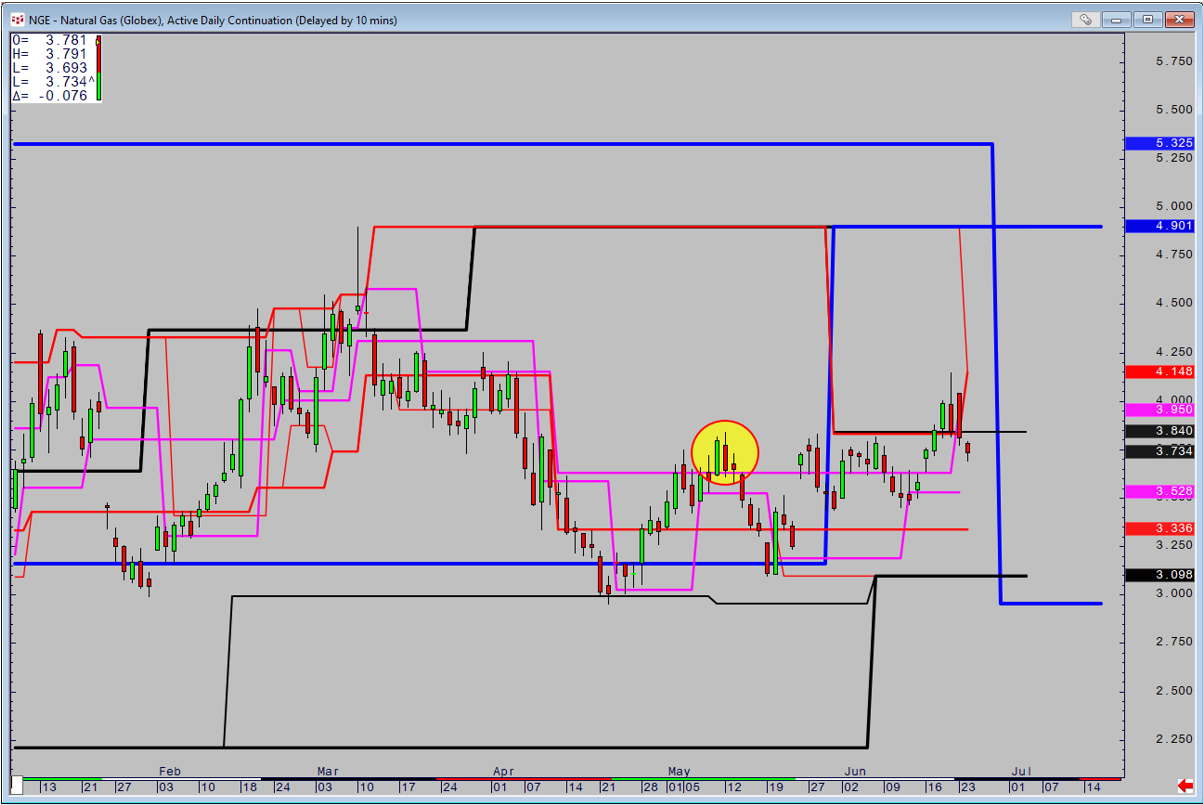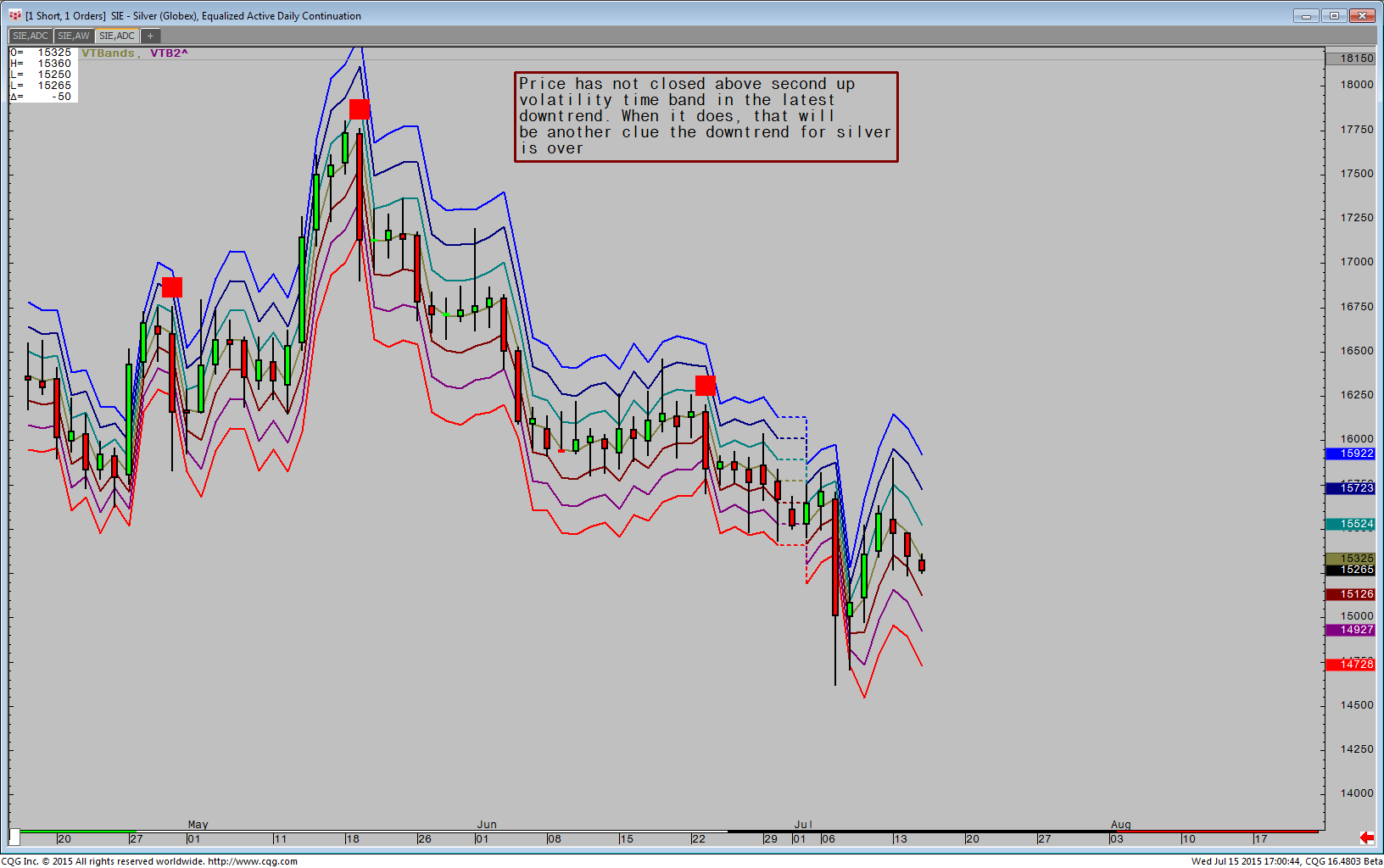Divergence can be likened to being able to see an eel in clear water. It's highly visible but try picking it up and holding on. If divergence is to be used as part of your armory it must be linked… more
Shaun Downey
The average range for each bar's time of day is computed over a user-defined period. For example, on a 30-minute chart, the 12 p.m. bar has its range calculated over the last n days.… more
Volatility Time Bands looks at each specific time of day to previous days (22 days) and then places 1,2 and 3 standard deviations on the opening price around that average of range. This maintains… more
Chapter 3 of Trading Time called Concepts of Time, is for me the most important chapter of the book. It was the quantum leap in my thinking up to that point and was the first examples of the… more
Range Deviation Pivots represent one of the core studies as part of the Fourth-Dimension suite. The calculation differs from standard Pivot theory in that they compute the range over the last 22… more
Whilst there a multitude of ways of analyzing markets the Fourth Dimension has one core philosophy that makes it unique. Namely, the creation of multiple timeframe analysis on one chart and the… more
When we step back for a moment to see what price action is telling us in the higher time frames, the fractal nature of markets is revealed and a much clearer picture can be garnered as to what may… more
Trend analysis via Step Theory reveals extremes that are rarely breached in any time frame. Below, the green and red studies are tracking uptrends and downtrends in 120-minute time frames. There… more
Moving Linear Regression lines are my preferred method for tracking a trend, especially on low time frame charts such as Constant Volume Bars or TFlow®. Regression lines have specific properties… more
A key advantage of TFlow® charts is their ability to build data based on activity. This allows for sensitivity without lag. It also allows for traditional analysis, such as trend lines,… more
